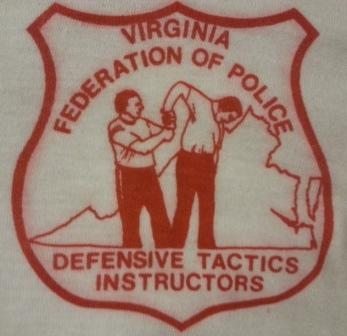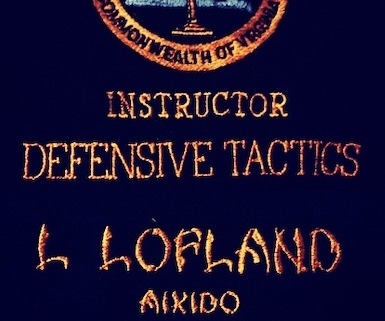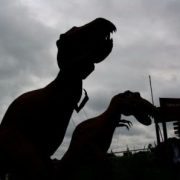It’s Christmas, So Let’s Pull a Fat Guy Through a Car Window
It was on a cold Christmas night, several years ago, when my wife Denene decided that she’d like to ride along with me during my shift so we could at least spend a part of the evening together. It would be her first and last first-hand experience of what I did for a living.
I was the officer in charge of operations, the OIC, that night so it wasn’t as if I’d be responding to calls, meaning I thought the danger level for her would be extremely low. And I was right, the first part of the evening shift was fairly quiet with a few of the typical pushing and shoving drunks, a couple of thefts, a drunk driver or two, a peeping Tom, a disorderly customer at a convenience store, etc. Nothing major.
I took Denene on a tour of parts of the city she’d never seen, and to a few she had but only during the daytime. Believe me, some typically normal neighborhoods totally transform once the sun is down and all the “creepies” come out to play. It’s the time when neon lights replace sunshine, and when alleyways come alive with feral animals, and people who pay for quickie sex behind dented dumpsters overflowing with restaurant waste and wet, slimy butcher shop cardboard and paper.
These are the streets and neighborhoods where wispy tendrils of sewer steam rise from storm drains to twist and writhe their way toward the night sky, floating and undulating until they melt into nothingness. Potholes are deep and overturned garbage cans pour out their innards for all to see. Front yards are bare dirt and sofas and used kitchen chairs sit on front porches featuring leaning posts and broken railings. At the curb at either side of the streets are empty beer cans, broken bottles and used needles and condoms mixed with dry, crispy leaves.
In the area sometimes called “The Bottom,” prostitutes displayed their wares in barely-there outfits while local businessmen, average Joes and sometimes Janes, and even a city official or two drove along the dark streets comparing the “merchandise.”
Zombie-like addicts marched and stumbled aimlessly along cold concrete walks and streets until they finally decided upon a random landing spot in a storefront entrance where they smoked, consumed rotgut liquor, or shot poison into their arms or legs. Then they slept awhile before setting off on another mindless quest for the next high.
Drug runners, the low-level, bottom of the narcotics-selling chain, the vendors of crack, meth, heroin, fentanyl, and Oxy, were at nearly every corner in the “hot” neighborhoods. They often damaged the corner street lamps by throwing rocks at the bulbs, or by shooting them out, so they could operate under the cover of darkness.
Runners stood alone or in small groups of three or so with each holding only a small amount of dope so not much would be lost should they be nabbed by cops. Users cruised the areas in their cars, driving slowly. When the runner spotted a likely customer he’d approach the vehicle. The driver handed over cash ($20 for a single crack rock) and the runner subsequently offered the drug. Sometimes the runner held the foil or plastic-wrapped rock in his mouth so he could easily swallow it in case the “customer” turned out to be a cop. When they were certain all was well they’d spit the wrapped rock into their hand to exchange for the cash.
When the runners sold out of merchandise they’d head back to the dealers to “re-up.” The process repeated hour after hour, night after night after night. The runners were always at ready to take off should an officer approach. It’s a cat and mouse game that’s played again and again—officers got out of our cars and they’d run. Officers chased after them. They’d drop the dope and an occasional gun. Officers picked up “the stuff” and maybe catch the guy or maybe not. Then the process began again with the next runner.
So after showing Denene enough of the rot of the city, I drove to areas where officers were on the scenes of various calls/complaints, making sure all was well. Then the radio crackled with an “officer needs assistance” call. She’d stopped a car for drunk driving and the driver refused to get out of his vehicle. She’d struggled with him a bit, through the car window, but had no luck. In fact, he’d spit at her and attempted to bite her. He’d struck her arms with his fist and tried to punch her face.
So off I went to see the trouble for myself. Other officers were also on the way to assist. When Denene and I arrived two officers were at the driver’s window grabbing and tugging the man and informing him that the use of pepper spray had become an option. A third officer stood at the passenger window preparing to break the glass. I shifted the car into park and told Denene I’d be right back (the equivalent to “Hold my Beer”). I stepped out of my car and walked over to the action.
 Since I was a DOJ master defensive tactics instructor/instructor-trainer who’d trained each of the on-scene officers during their time at the police academy, and the fact that I and Denene owned our own gym and martial arts school, and because I was the ranking officer on the scene, well, they’d assumed that I’d handle this situation. So they parted to allow me access to the driver.
Since I was a DOJ master defensive tactics instructor/instructor-trainer who’d trained each of the on-scene officers during their time at the police academy, and the fact that I and Denene owned our own gym and martial arts school, and because I was the ranking officer on the scene, well, they’d assumed that I’d handle this situation. So they parted to allow me access to the driver.
I politely informed the very large, wild and drunken man that he had two options. One, remove his seat belt and get out of the car on his on. Two, I’d cause him intense pain while removing him from the car, through the window. When he spit at me it was my conclusion that he’d opted for choice number two.
A few seconds later, after inflicting quite a bit of pain (I knew this because he was squealing and squawking like an angry parrot), I pulled him through the seatbelt and through the window (with his helpful assistance since he wanted the pain to stop sooner than asap), pulled him to the ground, spun him around and over using a wrist-turn-out. I then cuffed his hands behind his back.
I told the female officer who’d initially stopped the car to place my handcuffs in the mailbox outside my office door when she’d cleared from processing the man. I then turned and walked back to my car where I nonchalantly asked Denene if she’d like to grab a cup of coffee. Only a minute or two had passed since I first stepped out of my unmarked car.
She said, “How can you be so calm after such a violent event? And how in the world did you get that big man to fit through that window and all so quickly?”
I, like every officer out there, didn’t think twice about it. It’s what we/they are sometimes forced to do, those sorts of things—pulling grown men through car windows and the like. It’s part of the job, like editing is to a writer.
Yes, it was Christmas and Denene and I were together. But she never again rode with me.
She eventually stopped listening the police scanner we had at the house. She switched it off one night, for the final time, after hearing me tell other officers that “I’d go in first.”
Yeah, she’s much happier since writing about this stuff is a WHOLE lot safer …
Aikido
Aikido uses the attacker’s own force against him.

A wrist turnout applies intense pressure to the joint in the wrist, forcing the suspect off balance.

Proper grasp to begin the wrist turnout (Kotegaeshi Nage) technique. To complete the technique the officer maintains his grasp, rotates the suspect’s hand up and to the rear in a counter-clockwise motion while simultaneously stepping back with his (the officer) left leg. The suspect ends up on the floor on his back (see picture below). Any resistance inflcts excrutiating pain in the wrist, elbow, and shoulder.

Combative suspects are normally forced the ground for handcuffing. From this position, a quick turn of the suspect’s wrist and arm will force him to roll over on his stomach. Any resistance causes extreme pain and could injure the controlled wrist, elbow, and shoulder.

To effectively control the wrist, the elbow must be stationary. From this position, the suspect is easily handcuffed.

This wrist lock can cause intense pain in the wrist, the elbow, and the shoulder. Forward and downward pressure forces the suspect to the ground.
MERRY CHRISTMAS!











Nice Lee! But you describe a really crappy city. Even Minneapolis isn’t that lousy.
You’re not only an OIC, you’re a terrific writer. What a great visual…”It’s the time when neon lights replace sunshine” Ride-alongs belong to police officers, and, of course, writers! Merry Chistmas, Lee and Denene.